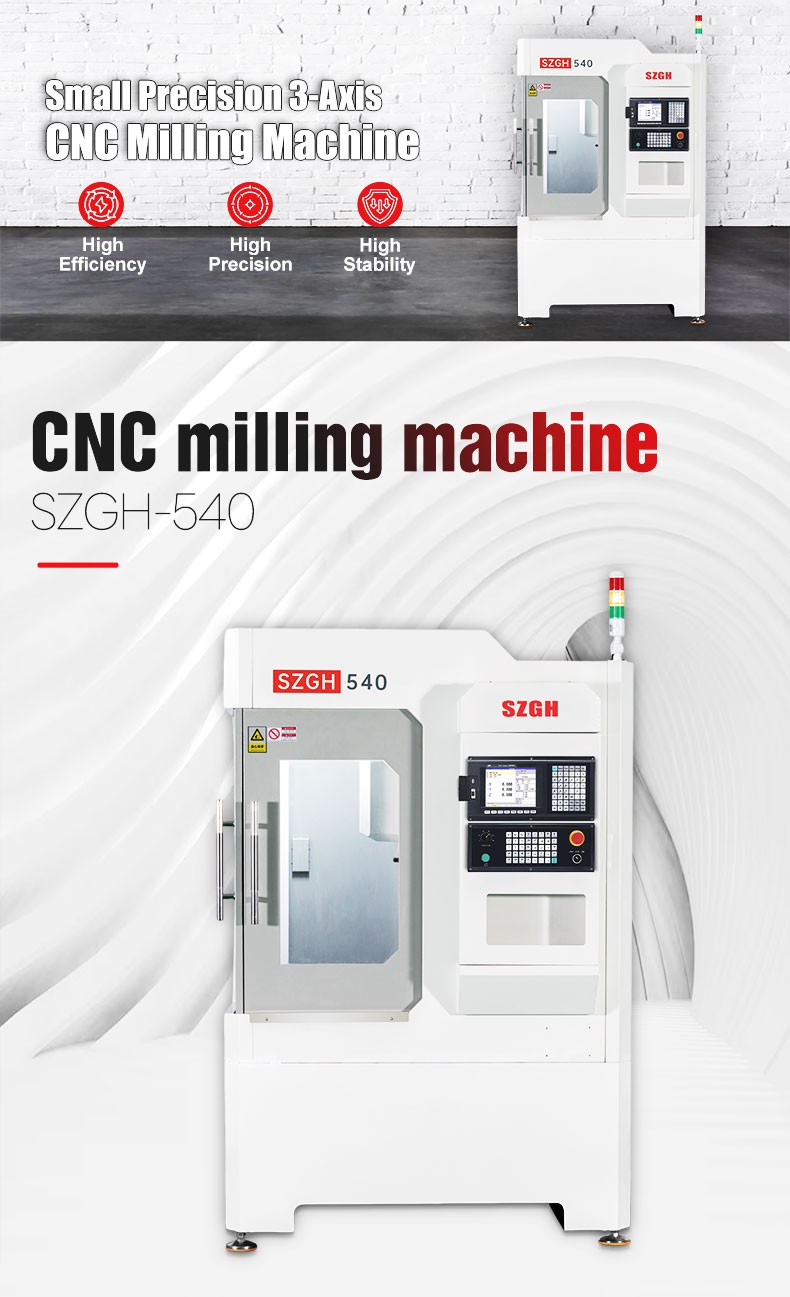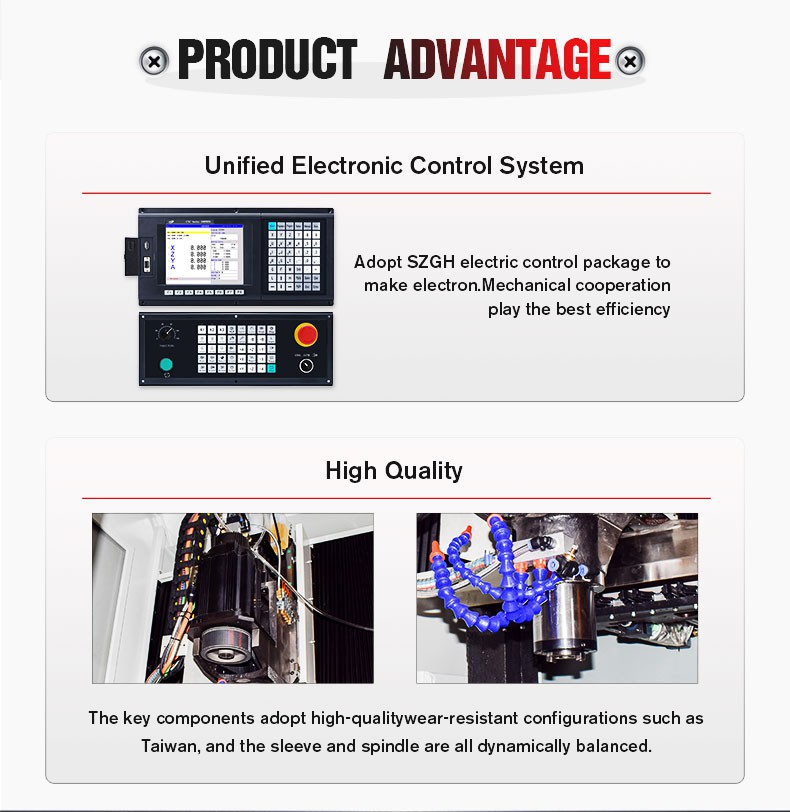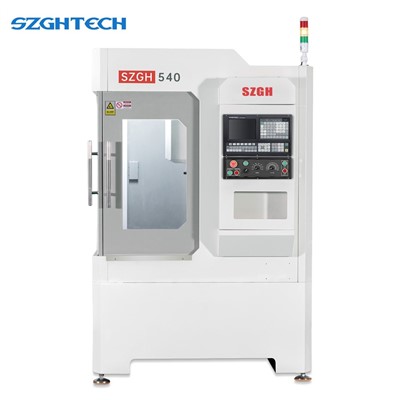SZGH-540 milling machine is a high-precision, multifunctional CNC milling machine, which is widely used in the field of mechanical processing, especially for the precision processing of parts. The milling machine has strong processing capabilities and can efficiently complete milling, drilling, tapping and other processing tasks.

1.Automatic Tool Change (ATC):
A key feature in milling machines, ATC enables the machine to automatically switch between various tools based on the machining requirements and workpiece specifications. This system enhances productivity and minimizes the need for manual intervention.
2. Milling
The most basic function of a milling machine is milling, which can perform plane milling, contour milling, groove milling, etc. on workpieces. By changing the tool and feed method, the milling machine can complete a variety of complex shape processing tasks.
3. Drilling
When the milling machine is equipped with a suitable drill bit, it can perform high-precision drilling processing. Including conventional drilling, reaming, countersinking and other functions, suitable for metal and non-metal materials.
4. Tapping
The milling machine supports tapping function, that is, internal thread processing on the workpiece. Modern CNC milling machines are usually equipped with automatic tapping systems to improve the accuracy and efficiency of tapping.







